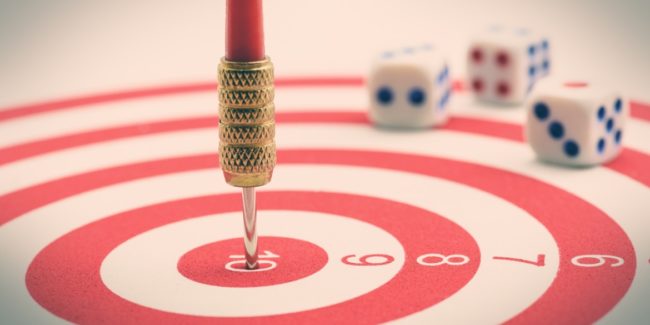No Results Found
The page you requested could not be found. Try refining your search, or use the navigation above to locate the post.
No Results Found
The page you requested could not be found. Try refining your search, or use the navigation above to locate the post.
Case Study: Orange & Rockland streamlines a best-in-class EV make-ready program with PowerClerk®
Ambitious EV adoption and charger goals have been set by the state of New York and Orange & Rockland (O&R). Notably, O&R set a target to increase EV chargers in their service area 30x by 2025. In support of this goal, O&R developed the POWERREADY EV...
Case Study: Eversource recognized as finalist in SEPA’s Utility Transformation Awards
The electric utility market is about to undergo profound changes. The broad decarbonization of energy production and storage was already underway and gaining speed, even before recent legislation such as the IRA and NEVI boosted momentum across the U.S. Now, driven by...
Implicit storage continues to gain support to enable renewables to deliver firm power, cost effectively
With solar and wind providing a greater percentage of electricity, managing the intrinsic intermittency of variable resources is becoming increasingly important. How do we overcome this intermittency? Answering this question has been the focus of an international...
Insights for utilities tackling complex, equitable EV programs
Tailwinds for electrifying transportation continue to strengthen. Utilities across the country are developing programs to accelerate EV adoption and efficiently roll out charging infrastructure. While some utilities have successfully piloted or launched their first...
2022 Solar Risk Assessment Report: Expert insights into key risk factors impacting solar assets globally
Although 2021 marked the third year in a row that solar represented the largest share of new generation capacity in the U.S., continued supply chain constraints, tariff investigations and inflation all pose uncertainty for 2022 project development pipelines. In this...
2021 Europe weather report: Extreme weather events highlight the need for comprehensive weather analytics
In 2021, Europe experienced the hottest summer on record, at 1.0°C (1.8°F) above average. This included an all-time peak temperature of 48.8°C (119.8°F) measured in Sicily in early August, surpassing the prior record of 48°C (118.4°F) set in...
SolarAnywhere® 2022 updates: industry-first features improving PV modeling accuracy
Each year Clean Power Research® makes updates to SolarAnywhere® to continue our tradition of providing the solar industry and utilities with the world’s best solar data and intelligence services. This year’s releases include: Global, easy-to-access...
2020 regional solar deviation summary and North American wildfire smoke impact report Copy
Wildfires diminished total sunlight in September 2020 by up to 20%, driving potential PV plant production riskDisaster preparedness—understanding and mitigating losses due to wind, hail and fire—is now a mainstream topic in the solar industry. In the...
Improve PV modeling with new SolarAnywhere® High-resolution solar data with True Dynamics™
Sunlight is dynamic. Imagine sunlight filtering through broken, drifting clouds. Shadows and light race across the landscape. The sun tracks across the sky. This is the real world that solar systems operate in.It’s no surprise that hourly PV modeling—still...
Three reasons it’s time for utilities to think seriously about distributed solar interconnection
When home and business owners decide to go solar, they embark on an adventure that will require navigation of a multi-step process that includes soliciting and evaluating proposals, determining financing, and applying for permits, incentives and interconnection....
New York State solar incentive programs consolidated into NY-Sun
This month, under direction from the New York State Governor’s office, the New York State Energy Research and Development Authority (NYSERDA) and PSEG Long Island (now operating Long Island Power Authority’s electric system) merged their solar incentive programs under...
PowerClerk auto-document generation and electronic signature features streamline incentive and interconnection processing
Taking paper intensive processes online can dramatically simplify what formerly would have been manual, time-consuming administrative tasks. For the solar industry, this can help reduce soft costs, which today account for more than 60 percent of the cost of installing...
Infographic: Keeping Track of Solar
2013 saw record-breaking solar growth in the U.S.—an increase of 41% over 2012—and 2014 is expected to see even larger gains. With more than 440,000 solar electric systems operating across the U.S. today, keeping track of these distributed resources is more important...
CSI program wind-down doesn’t mean the end of solar in California
As the California Solar Initiative General Market program—the largest PV incentive program in the U.S.—winds down, an interesting solar landscape is emerging in California. A number of incentive programs large and small continue to support solar adoption in the state,...
Three ways automation can smash solar interconnection costs
It’s no secret that although solar hardware costs have been steadily decreasing, solar soft costs— including permitting, interconnection, customer acquisition and installation labor—have remained steady. In fact, according to studies by the National Renewable Energy...
California Solar Initiative at 85% of MW goal (and how we helped them get there)
It’s a remarkable achievement that in just seven years, the California Solar Initiative (CSI) has reported an estimated 1,629 megawatts (MW) of solar PV has been committed. That is a whopping 85% of its goal to install 1,940 MW of solar by the end of 2016 in...
Georgia blazing new trails with its value-based FiT
California and New Jersey are known for solar policy innovation, while the states of the Southeast have tended to stay on the sidelines despite having abundant sunshine. Until now, that is. Georgia is quickly emerging as a solar power innovator. Over the past 12...
USC 2013 insights: illuminating key utility solar issues
The Solar Electric Power Association (SEPA) Utility Solar Conference (USC) was held last month in Portland, Ore. This was convenient for our Kirkland, Wash., software team, so we sent four people down to join Tom Hoff from our Napa, Calif., office at the event. It was...
Valuation of solar plus storage in Hawaii
Clean Power Research recently took on the challenge of developing a new methodology for performing a hybrid solar plus storage (solar + storage) valuation study for systems in Hawaii. The methodology was commissioned by the Interstate Renewable Energy Council, Inc....
Five to thrive: Key characteristics of great utility customer engagement
"The utilities that succeed in educating their residential customers may be [the best positioned not only] to survive, but [also to] thrive in the new customer-centric electricity landscape that is now taking shape." – 2015 Utility Residential Customer Education...
Lessons from SEPA’s Utility Solar Conference Part 2: Stop worrying about rooftop solar (start focusing on opportunities)
For all the talk of utility death spirals, a single graph from GTM Research’s Shayle Kann, presented at the recent Solar Electric Power Association’s (SEPA) annual Utility Solar Conference (USC), should give U.S. utilities significant comfort that residential solar...
Lessons from SEPA’s Utility Solar Conference Part 1: Get electric rates right to fill the belly of the duck
The Solar Electric Power Association’s (SEPA) annual Utility Solar Conference (USC) is the premier utility solar conference in the United States, and the in-depth discussions between utility and industry leaders can be counted on to portend where solar is heading. At...
Connecting 150,000 solar customers to PG&E’s electric grid
This week, Pacific Gas & Electric (PG&E) announced a major milestone: connection of 150,000 solar customers to their electric grid. This achievement is the result of PG&E’s long commitment to supporting their customers going solar, and comes with some...
Our top 3 in 2014
In 2014, we covered a wide range of topics on the Clean Power Research blog, from the differences between solar resource datasets, to deep dives into value of solar calculations. The top three posts of the year followed suit, reflecting interest in topics that address...
U.S. solar trends: 2015 edition
As everyone recovers from their New Year’s Eve festivities, shakes off the cobwebs and gets back to work, it’s time for our annual look at trends and predictions for the coming year. Who knows if we’ll be right, but it’s always fun to prognosticate. Here are the three...
Is it rational for the value of solar to exceed existing average retail electricity rates?
The utility and solar industries are in a heated debate about how to compensate customers who have distributed photovoltaic (PV) energy systems on their homes. Net energy metering (NEM) is currently the predominant approach used in the U.S. However, to understand any...
29 million answers to the question “What can solar do for me?”
The calculations to determine whether or not solar is a good investment are not simple—unless you’re using the Clean Power Estimator® solar calculator. Since we started counting 10 years ago, Clean Power Estimator has performed more than 29 million solar savings...
What U.S. PV plant owners have seen in 2018/2019 is real: sunshine has been scarce
What it means to PV plant owners and developers For many solar PV plant owners in the U.S., solar energy production in the last year or two has fallen well below expectations. We’ve heard this again and again recently. Maybe you’ve heard the same thing. What’s causing...
New SolarAnywhere® bankable data, expanded geographic coverage, model validation and more
Clean Power Research has officially released SolarAnywhere® Data version 3.3, making it our most up-to-date bankable dataset for resource assessment, operational monitoring and forecasting solar PV. In the new version, 21 years of data are represented in the new...
New SolarAnywhere PXX Data Streamline Probability of Exceedance Energy Calculations
Until now, SolarAnywhere® has offered two types of data: time-series and typical year (TGY). Today we’ve added a third option, probability of exceedance, or PXX for short. The “XX” refers to the probability that the level of irradiance will be exceeded in a given...
Higher-resolution data and broader geographic access with new SolarAnywhere Data license options
Thanks to our subscribers, partners and hard-working development team, SolarAnywhere® has become the most trusted and vetted solar resource dataset available. In 2017 alone, the SolarAnywhere team: Topped an EPRI study for forecasting Spotted a calibration issue at...
The future of solar forecasting with the new GOES-16 satellite
The SolarAnywhere® team transforms satellite images into industry-leading solar irradiance data. We make algorithms, not satellites, so when NOAA/NASA upgrades the hardware, we take notice of the possibilities—and get to work. On January 2, 2018 we made a seamless...
SolarAnywhere FleetView Forecasts Top EPRI Study
The Electric Power Research Institute (EPRI) recently completed a solar forecasting trial designed to help utilities understand the value that accurate solar prediction can bring to their energy market schedules and balancing operations. SolarAnywhere® FleetView®...
Evidence of satellite-truth when comparing to ground irradiance measurements
Troubleshooting ground measurements with satellite irradiance data We recently reported how the use of SolarAnywhere® Data made it possible for us to detect an unreported irradiance sensor calibration issue at one of the nation’s most trusted reference stations: the...
The August 21st solar eclipse: How and where it’ll impact solar production
On August 21, 2017, the U.S. will experience a solar eclipse for the first time since May 2012. The eclipse will cause an obscuration of the sun’s light, resulting in a reduction of the energy from irradiance that will hit the Earth’s surface. As the eclipse crosses...
Adapting utility processes to the reality of distributed PV
Utility processes and systems impacted by distributed PV In previous blog posts, we’ve looked at how the growth of distributed PV can impact grid operation at the system level. These blogs addressed how distributed PV can lead to the often referenced “duck curve,” and...
No Results Found
The page you requested could not be found. Try refining your search, or use the navigation above to locate the post.
No Results Found
The page you requested could not be found. Try refining your search, or use the navigation above to locate the post.
SolarAnywhere now-casts to support EDD-led U.S. DOE project to improve grid resiliency with interconnected DERs
Clean Power Research was selected to participate in a U.S. Department of Energy (DOE) research and development (R&D) project focused on increasing behind-the-meter solar situational awareness and grid resiliency. SolarAnywhere® historical, now-cast and forecast...
Empowering customers with backup power protection during outages
Reliability is a core mission of electric utilities. Utilities are typically so effective at providing reliable service that customers are accustomed to having power available whenever they want it. As might be expected, when power is unavailable, customers become...
All top 10 U.S. utilities trust Clean Power Research
At Clean Power Research, we think of ourselves as a modestly sized company doing big work. We are a passionate team of engineers, scientists and customer-obsessed service professionals focused on delivering world-class software solutions to utilities and the solar...
Could distributed solar + storage protect Californians from precautionary power outages?
Wildfires & California: A major concern California has experienced multiple devastating wildfires over the past two years. The Wine Country Fires that started on October 8, 2017, in Napa County killed 44 people and cost $15 billion. The Camp Fire, an even more...
Three keys to unlocking DER program management excellence
A question we often hear from utilities is: “What makes an effective distributed energy resource (DER) program management solution over the long-term?” The question is often rooted in concern for making the best choice between developing an in-house solution or...
Demand for firm power driving innovation in solar forecasting
Since 2014, compelling economics have made renewable energy the preferred source of new power generation capacity in the United States. Energy cost parity with traditional sources has been well-established by the International Renewable Energy Agency (IRENA) and other...
As community solar grows, scaling customer engagement is critical
Solar energy production is booming in the United States. According to the EIA (U.S. Energy Information Administration), “U.S. solar generation has increased from 2 million MWh in 2008 to 96 million MWh in 2018.” The growth of solar has coincided with the proliferation...
What U.S. PV plant owners have seen in 2018/2019 is real: sunshine has been scarce
What it means to PV plant owners and developers For many solar PV plant owners in the U.S., solar energy production in the last year or two has fallen well below expectations. We’ve heard this again and again recently. Maybe you’ve heard the same thing. What’s causing...
New SolarAnywhere® bankable data, expanded geographic coverage, model validation and more
Clean Power Research has officially released SolarAnywhere® Data version 3.3, making it our most up-to-date bankable dataset for resource assessment, operational monitoring and forecasting solar PV. In the new version, 21 years of data are represented in the new...










































